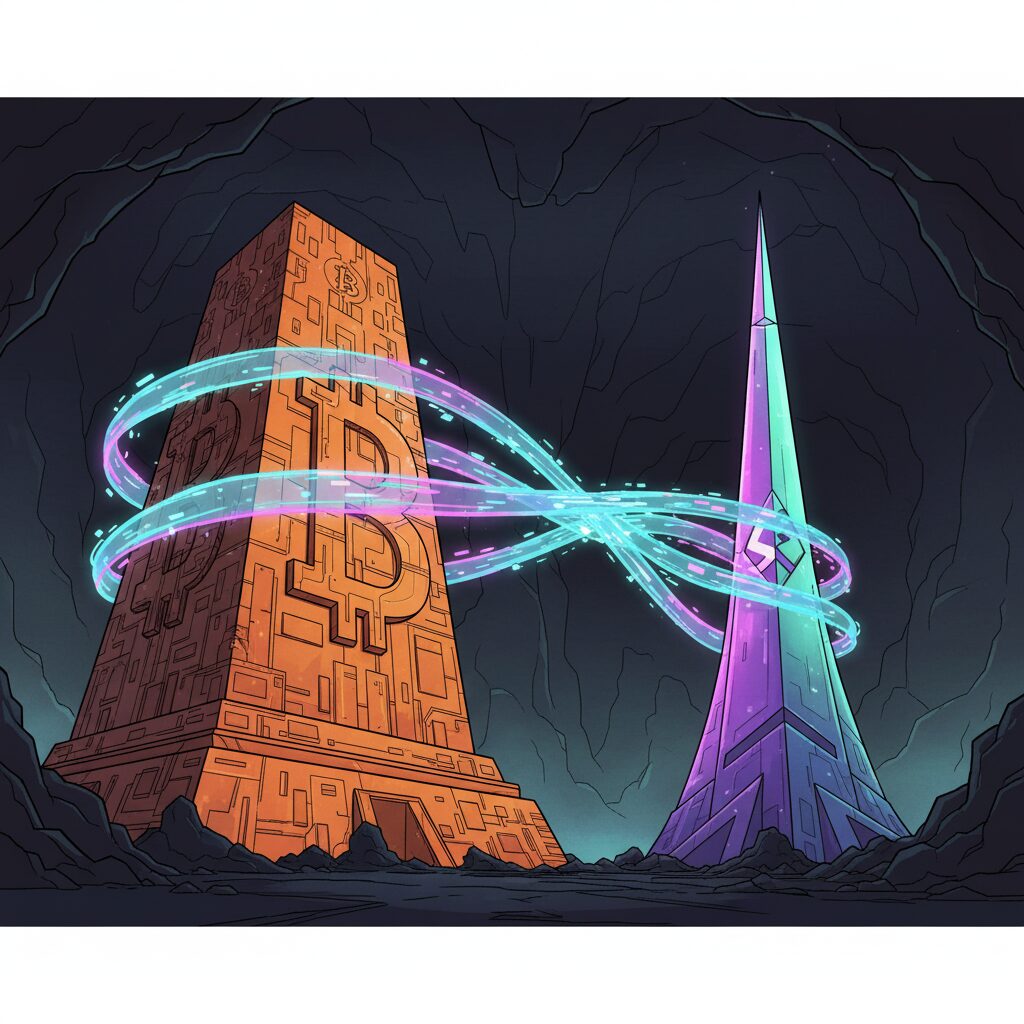Bitcoin Hyper: A Layer 2 Solution Using Solana Tech for BTC

A new project, Bitcoin Hyper, has emerged as a Layer 2 scaling solution designed to address the speed and scalability limitations of the Bitcoin network. The platform aims to enable faster transactions and support complex operations like Decentralized Finance (DeFi) by building on top of the main Bitcoin blockchain.
How It Works: Architecture and Process
Bitcoin Hyper’s architecture leverages Solana’s Virtual Machine (SVM) to achieve high throughput and processing speeds. The system facilitates the transfer of assets between Bitcoin’s main network (Layer 1) and its own execution environment through a four-stage process involving a canonical bridge and zero-knowledge proofs.
The Asset Transfer Cycle
The process begins when a user deposits BTC into a designated Bitcoin address monitored by the project’s bridge. A smart contract known as the Bitcoin Relay Program verifies Bitcoin block headers and transaction proofs. Upon successful verification, an equivalent amount of tokenized BTC is minted on the Bitcoin Hyper Layer 2.
Once on the Layer 2 network, users can send and receive assets with near-instant finality. This environment is also designed to support more complex applications, including staking protocols and decentralized exchanges, which are not natively possible on Bitcoin’s base layer.
For settlement and security, Bitcoin Hyper batches and compresses its Layer 2 transactions. It then uses zero-knowledge (ZK) proofs to ensure the validity of these transaction groups. This proof, representing the updated state of the Layer 2, is periodically committed back to the main Bitcoin blockchain, maintaining synchronization and leveraging its security.
To withdraw funds, a user initiates a request on the Layer 2. The system verifies the request against the network’s state and generates a proof for the canonical bridge. After validation, the corresponding amount of BTC is released from the bridge back to the user’s wallet on the Bitcoin Layer 1.
Token Economics
The project is powered by its native token, $HYPER. According to its tokenomics plan, 25% of the total supply is allocated to a treasury fund for business development and community activations. A further 20% is designated for marketing initiatives.
A New Approach to Scaling Bitcoin
Bitcoin Hyper is emerging as a Layer 2 network designed to enhance the Bitcoin blockchain by enabling faster, low-cost transactions. The project aims to unlock advanced functionalities like staking, Decentralized Finance (DeFi), and on-chain decentralized applications (DApps) for the Bitcoin ecosystem. Its core innovation lies in integrating the Solana Virtual Machine (SVM), a high-throughput engine, to power its rollup architecture.
The primary goal is to address Bitcoin’s inherent limitations in transaction speed and fees while preserving its foundational security. By adopting the rollup model, which has proven effective for scaling Ethereum, Bitcoin Hyper batches and compresses transactions on its Layer 2 before periodically committing the updated state back to the main Bitcoin blockchain.
Core Principles and Design Philosophy
Security remains the project’s paramount principle. Any feature or design choice that could compromise the security inherited from the Bitcoin network is not considered. This foundational approach ensures that enhancements in speed, programmability, and composability are built upon a secure base.
Beyond the code, Bitcoin Hyper is focused on fostering a thriving developer ecosystem. The project emphasizes creating robust infrastructure, including RPCs, indexers, and monitoring systems, to provide builders with the necessary tools for creating usable applications. A key part of its philosophy is to make the development workflow feel familiar, reducing the friction often associated with building on new chains by aligning with existing tools and concepts.
How It Works: The Technical Architecture
The network operates through a multi-stage process to move assets between Bitcoin’s Layer 1 and its own Layer 2. It begins when a user sends BTC to a specific address managed by the Bitcoin Hyper Canonical Bridge. A smart contract, known as the Bitcoin Relay Program, then verifies the transaction’s inclusion in a Bitcoin block. Once confirmed, an equivalent amount of BTC is minted on the Layer 2 network.
On this second layer, users can transact with near-instant finality and minimal costs, engaging with complex applications like decentralized trading. The execution layer, powered by the SVM, is built for speed and scalability. Finally, transaction data from the Layer 2 is secured using zero-knowledge (ZK) proofs to ensure its validity before being settled on Bitcoin’s main network. This process allows users to withdraw their BTC back to Layer 1 at any time.
Project Status and the $HYPER Token
The development team has quietly launched the first version of the Bitcoin Hyper devnet, a test network allowing for experimentation and refinement of the platform’s capabilities. The project has also demonstrated the ability to run Solana programs natively on its rollup architecture, confirming its compatibility with the SVM.
The native token of the network is $HYPER, which is designed for use in transactions, staking, and governance. According to the project, $HYPER tokens will be claimable on the Solana blockchain for SOL-based participants, while those using ETH, BNB, or credit cards will claim their tokens on Ethereum. A bridge is planned to facilitate asset movement between Solana, Ethereum, and the Bitcoin Hyper network.











